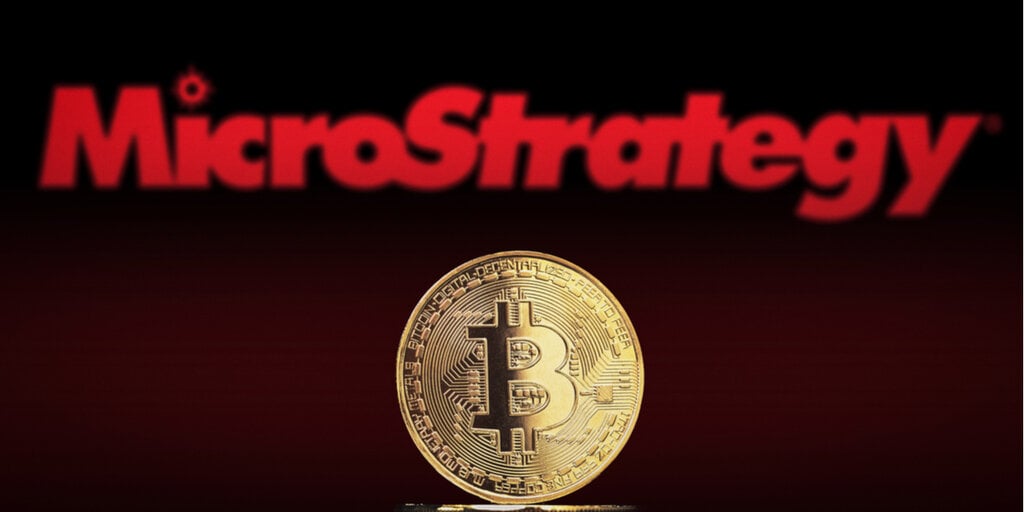Following hints that MicroStrategy would be entering Bitcoin software development when the Ordinals craze started last summer, the company this week announced MicroStrategy Orange, a decentralized identity (DID) platform. This vast concept has applications in fighting social media bots and spam, authenticating documents, protecting medical records, and more.
When Orange's draft specifications were published on GitHub, they received mixed reactions from Crypto Twitter. One reason for this is the technical complexity of the plan. Here's a basic primer on the proposed digital identity system and how it ties in with Bitcoin.
What is MicroStrategy Orange?
MicroStrategy Orange is a Bitcoin-based technology that was co-introduced by MicroStrategy co-founder and executive chairman Michael Saylor and executive director of engineering Cezary Raczko at the annual MicroStrategy World conference on May 1st. A decentralized ID (DID) system.
MicroStrategy Orange is an attempt to facilitate decentralized identities that are immutable or permanently fixed. These identifiers provide a way for individuals to manage and verify their identity without relying on a central authority.
How is orange used in real life?
MicroStrategy said the potential of MicroStrategy Orange and Bitcoin's decentralized identifiers could also be used to authenticate users in social media applications, or to authenticate text messages or medical records.
For example, social media apps can verify a user's DID on the Bitcoin blockchain and display an “orange check” to other users. Alternatively, medical record metadata (perhaps a hash of its contents at a given point in time) could be stored in Bitcoin and used to authenticate its ownership and that it has not been modified. Public records such as land and house deeds could also be inscribed on the Bitcoin blockchain.
DID: What is BTC and how does Bitcoin fit into it?
By establishing a decentralized identity system on top of Bitcoin, called DID:BTC, users can benefit from the robust security and global decentralized network of the Bitcoin blockchain.
According to MicroStrategy, DID:BTC uses a modified version of the Ordinals inscription. Introduced in January 2023, Ordinals imprints are digital assets (images, text, music, videos) that are “imprinted” on an individual Satoshi, the smallest denomination of Bitcoin.
For MicroStrategy Orange, inscription space is used to store DID-related data and updates. This identity, authentication, and verification information is separated from other digital data (such as images and documents) stored elsewhere.
As a result, DID-authenticated files can be created and updated without hitting any size or content limits, while still taking advantage of the cost-saving mechanisms introduced by the Bitcoin network's Segregated Witness (SegWit) protocol. Ta.
Introduced in 2017, SegWit increases Bitcoin's block capacity, reduces transaction size, and enhances scalability by separating signature data from transaction data.
What does the proposed DID:BTC specification say?
A preliminary draft of the Bitcoin Orange plan was published on GitHub for public viewing, commenting, and ultimately allowing for inline discussion and collaborative editing. Although primarily technical in content, it covers some key topics, such as how data is formatted in Bitcoin inscriptions and the privacy implications.
For example, this specification will allow you to update the on-chain DID:BTC identifier. The original DID identifier is immutable, but the associated content and its associated keys can change.
DID:BTC identifier updates are done using JSON, a standard format for data exchange.
MicroStrategy, on the other hand, says that if an ID needs to be removed, it can be deactivated by “using” the DID:BTC identifier, i.e. using the remaining UTXOs (unused transaction outputs) to set the flag He said that it can be deactivated by doing so.
What are the critics saying about MicroStrategy Orange?
Reactions to MicroStrategy's announcement were mixed on Crypto Twitter, with some Bitcoin enthusiasts saying DID data would not be welcome on the world's dominant blockchain. This is a similar reaction to what we've seen to the rise of Ordinals inscriptions, along with Bitcoin meme coins via the BRC-20 and Runes token standards.
Taproot Wizards CEO Woody Wertheimer says Lasereye Maxis, who helped Saylor make a huge Bitcoin purchase, is “their lord and savior” and puts “institutional-grade spam” on the blockchain. He joked that he was in total chaos because he had brought it in.
“I don't like shitty coins at all, but if you close your eyes this speech sounds like something the US government would say,” one post read, while another called Saylor a “bait boy.” It was called.
“Why does this dog throw up trash?” No, never. No,” another person replied.
Bitcoin advocate and venture capitalist Preston Paisch noted that Thaler focused on the commercial implications of the Ordinals inscription as soon as it appeared.
When will Orange be available?
MicroStrategy did not say when the Orange protocol would come online, saying the information published on GitHub is an unofficial early draft. Even if it is completed, it is unclear whether other Bitcoin projects, crypto platforms, or apps will utilize it.
Editing: Ryan Ozawa and Andrew Hayward

